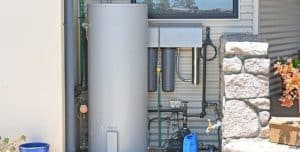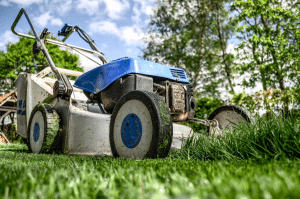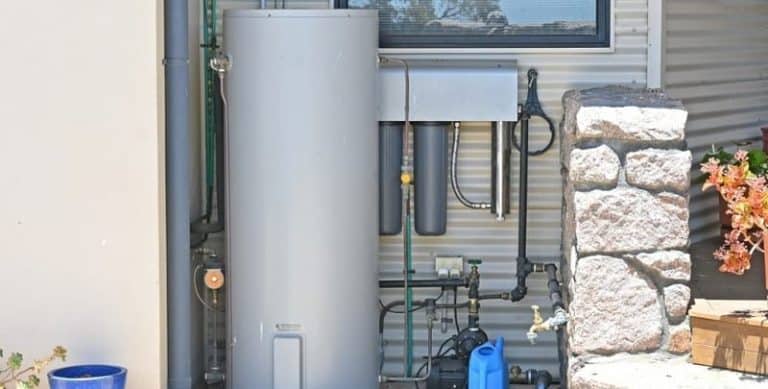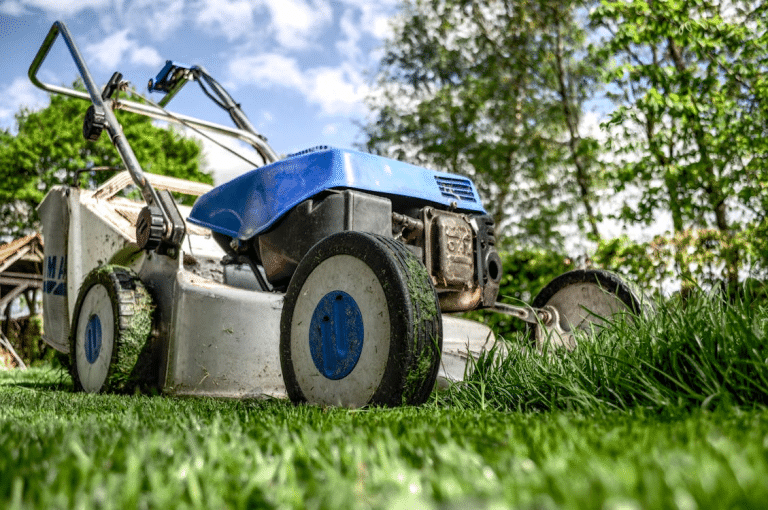In the garden, you don’t have to guess your way through this. If you’re staring at ivy swallowing a fence or brush creeping into a lawn, there’s a simple way to choose the right herbicide.
Right now, walk through your problem area and decide one thing: do you want the grass to live or die where you spray? That single choice narrows everything. You can probably smell crushed vines and feel the prick of blackberry thorns in your sleeves.
Let’s turn that frustration into a plan.
Short Answer: Save Turf With Triclopyr, Clear All With Glyphosate
Keep the grass, kill the broadleaf stuff (poison ivy, blackberries, multiflora rose, creeping Charlie)? Use triclopyr. It’s selective, tough on broadleaf and woody plants, and easy on established turf.
Want a clean slate (gravel, fence lines, patios, garden beds before replanting? Use glyphosate. It’s non-selective; it kills almost anything green.
A quick cue to separate them: If you want to spray over grass without harming the lawn, reach for triclopyr. If grass survival doesn’t matter, glyphosate is the simpler, cheaper hammer.
Why Triclopyr Spares Turf and Glyphosate Hits All Green
Triclopyr acts like an overactive plant hormone in broadleaf and woody species. It scrambles their growth, curls leaves, twists stems, and shuts down transport tissues. Grasses don’t “hear” that signal much, so they mostly shrug it off.
Glyphosate targets a different pathway that plants use to produce key amino acids. Every green plant uses that pathway, so when glyphosate gets into leaves, it quietly moves through the plant and starves it from the inside.
That’s why triclopyr can be used in lawns, while glyphosate is the reset button. It also explains speed: triclopyr often shows injury within a day. Glyphosate takes longer to show, but moves deeply into the roots.
Poison Ivy or Woody Vines in Turf: Use Triclopyr
If the lawn needs to stay, triclopyr is your friend. Spray leaves to wet (not dripping) when vines are actively growing and leaves are fully expanded. Add a labeled non-ionic surfactant if your product doesn’t include one, such as waxy leaves like ivy shed spray, to prevent it from clogging. Pick a mild day, little wind, and skip the heat of the afternoon.
Do this: Foliar spray triclopyr on the target leaves in the lawn. You’ll see curling and cupping within 24-48 hours if the treatment is working.
Follow through: Come back in 2-4 weeks for a second hit on anything that stayed green. In the fall, a well-timed application moves herbicide into roots as vines stockpile sugars.
Bare Ground and Fence Lines: Use Glyphosate, Shield Keepers
Here, glyphosate’s simplicity wins. It’s non-selective, so protect anything you want to keep. Trim or string trim tall, woody stuff, and let fresh leaves regrow. A week or two, young, actively growing leaves take up more herbicide. Spray on a dry day and give it a good rain-free window.
Do this: Foliar spray glyphosate on dry, actively growing leaves. Expect yellowing or wilting in 3-7 days, with full dieback in 2-3 weeks.
Pro tip: Don’t mow or rip plants out too soon. Let glyphosate move down into roots. If a few shoots green back up after two weeks, spot spray again.
We see this pattern on site visits all the time: nine times out of ten, poison ivy in lawns responds faster and cleaner to triclopyr than to glyphosate because triclopyr both penetrates those waxy leaves and spares the turf you’re trying to protect.
Cut Stumps: Treat Immediately With Triclopyr Concentrate
When you cut a woody invader (buckthorn, wild rose, privet), treat the stump right away ideally within minutes like when you cut and treat grape vines. Paint or spray the freshly cut surface with triclopyr concentrate per label (many “brush and stump” products are designed for this). This channels herbicide into the cambium and prevents resprouting.
Glyphosate can also work for cut stump on some species, but triclopyr tends to be more reliable on stubborn resprouters with a baggie method for vines. Check back in a month. No new shoots is your win. If you see a green halo around the stump, retreat.
Timing and Weather: Spray Mild, Dry Days on Growing Plants
-
Growth stage matters. Both products work best on actively growing plants with healthy leaves. For woody vines and brush, late summer into early fall is excellent, as plants are moving sugars (and herbicide) to roots.
-
Temperature: Aim for mild days (roughly 60-85°F). Triclopyr ester formulations can volatilize and drift in heat. Select amine formulations for use in hot weather or near sensitive plants.
-
Water: Give both products a rain-free window. Many labels list a few hours. If possible, plan for a half-day dry. Don’t spray drought-stressed plants; they’re not taking anything up.
-
Leaf condition: Waxy leaves (ivy, some honeysuckles) benefit from a labeled surfactant. Don’t DIY with dish soap.
-
Mowing: Don’t spray right after mowing. Give 3-7 days for leaves to regrow and uptake to improve. Likewise, avoid mowing for a few days after treatment.
Safety and Drift: Shield People, Pets, and Desirable Plants
Both herbicides are low to moderate in toxicity when used as labeled. Wear gloves, long sleeves, and eye protection, and mix carefully. Keep kids and pets out of the area until the sprays are dry.
Glyphosate is non-selective any green tissue it touches, it injures. Shield shrubs, perennials, and trunks with green bark. Triclopyr is selective above ground but can linger in soil for a few weeks. Be cautious around the root zones of desirable broadleaf plants and avoid saturating the soil.
Near water, use only aquatic-labeled formulations and respect buffer zones. Drift is real: spray on calm days, keep the nozzle low, and use the coarsest droplet that still wets the leaf.
Practical Choices Most People Miss: Combo Use, Speed, Replanting
-
Combination approach: Mixed vegetation across a big area? It’s reasonable to start with triclopyr where you want grass preserved, then come back later with spot glyphosate on patches you’re clearing to bare ground. Some products combine both actives for non-crop sites, handy for brushy, weedy mixes when turf protection doesn’t matter.
-
Speed expectations: Triclopyr often shows curl in a day and browning in a few. Glyphosate looks slow at first. Don’t panic and re-spray too soon. (Good sign: in like 5-7 days you’ll see uniform yellowing across treated leaves.)
-
Replanting: Glyphosate binds to soil and becomes inactive. You can usually prep and replant after the old growth is dead and removed (check your label). After triclopyr in turf, wait a few weeks before overseeding so new seedlings aren’t exposed.
Final Thoughts
If you want a quick rule of thumb for future battles: target matters more than brand. Broadleaf in grass? Triclopyr. Everything must go? Glyphosate. Woody stump? Triclopyr, right after cutting. The rest is getting the timing and coverage right.
You’ve got this. Once you see those first curls on ivy or that uniform yellow on the fence line, you’ll know the chemistry is doing its job. Over the next week, the area gets quieter, less green, less grabby. By days 10-14, you can clean up the dead material and decide what you want to grow there next.













